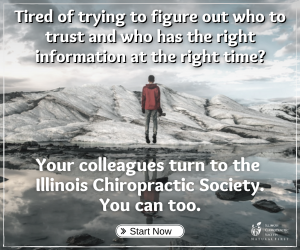
Lifetime Care vs. Lifetime Treatment

Recently, I received a couple of questions via private message on social media regarding my stance on lifetime care. Much to the other party’s surprise, I advocate for lifetime care. Before we go on, please note that there is a BIG difference between lifetime care and lifetime treatment.
Its About the Relationship
Humbly, I feel that the difference is that lifetime care is about the doctor-patient relationship. This is working hard day in and day out building trust and rapport with patients. This is about doing the right things for the patient in helping navigate the evolving health care landscape. This cements your reputation in your community as the “go-to” doctor for referrals to other health care providers, the provider of general health advice, the place for treatment of conservative NMSK issues, the place for second opinions on conservative health issues in general.
Patients won’t think twice about coming back for a new injury or relapse, because they value the service you provide for them. Providing ethical lifetime care one episode at a time, case by case, patient by patient, provides the professional fulfillment that I think many of us are seeking. That’s why most of us got into health care in the first place, and that’s serving patients.
Lifetime Treatment
On the other hand, lifetime treatment in the context of this article centers on providing a specific medical service to a patient (manipulation) for one specific condition, the subluxation complex. Lifetime treatment is doctor-centered, not patient-centered. To the best of my knowledge, there is no credible or overwhelming body of evidence to date that suggests that lifetime treatment with manipulations, namely extended treatment plans, provide plausible long-term health benefits in general, and specifically for spinal pain such as low back pain, thoracic pain, neck pain or cervicogenic headaches.
At best, there is some evidence in one study suggesting that sustained “maintenance” manipulation, approximately 2x/month for 9 months, will maintain a positive effect. However, that study did not compare the clinical effects and costs of sustained manipulation to other treatments, such as home exercise, advice, etc., which could also theoretically provide the same effects with less cost (5). Additionally, the study did not look at lifetime manipulation; it merely looked at manipulation over an extended time period (9 months). Please note, this is not intended to be an all-inclusive review of the literature on the topic of maintenance care, wellness care, or manipulation for non-MSK issues. The intent of this article is simply to compare lifetime care vs. lifetime treatment.
There is evidence that the effects of adjustments for spinal pain taper after a specific amount of treatment for many patients (1, 2, 3, 4, 6, 7). Research indicates that the best therapeutic effects (“dose effect”) are incurred in a range of 8-16 adjustments over a period of approximately 4-8 weeks. Several studies suggest the “magic number” is approximately 12 (1). Research even suggests that the effects may last longer than the treatment period, indicating that months or longer after the treatment was performed, the benefit could still be incurred.
The “Magic” Number
The term “magic number” is intentionally placed in quotations, as this is not an absolute number nor a recommendation. Best practice in health care is still to make tailored recommendations to each case and each patient. Therefore, the “magic” number 12, the range of 8-16 visits and the time frame of 4-8 weeks are nothing more than loose guidelines to gauge treatment response. Many studies of this issue look at manipulation in isolation. In clinical practice, rarely is manipulation a stand-alone procedure. Often the service is combined with other treatments. There are other variables to account for as well, such as provider experience, style of manipulation, overall treatment environment, patient expectation, etc. These variables in clinical practice cannot all be accounted for in the research setting. This is another reason why the “magic number” and “magic range” are loose guidelines, rather than absolute.
Dose-effect/dose response and treatment plans are hot issues in the profession. The extended treatment plan issue demands further research to guide clinical practice. To date, current best evidence and practice standards dictate that long term extended treatment plans aren’t typically indicated for many patients (1). Please note, of course, that undertreating a patient could be equally detrimental, as the therapeutic dose may not be realized (1). Again, the research reviewed in this article merely serves as a guideline, not an absolute, with each situation demanding individualized treatment to result in outstanding outcomes, patient satisfaction and delivery of high quality, affordable care.
Lifetime Care
Let’s circle back to the topic of lifetime care. Lifetime care is cultivating a strong, positive, healthy doctor-patient relationship based on trust and mutual respect. This is day in, day out putting the patient’s best interest and health first. Aggressive sales tactics cannot and should not be utilized. Selling yourself and your services with the intent to manipulate or deceive a patient should not be utilized. Long term treatment when not indicated by the clinical case could harm the patient, the provider’s reputation and the profession at large.
Cultivating a strong, positive, healthy doctor-patient relationship through a lifetime care strategy based on trust and mutual respect has a strong impact on you and your practice.
This strategy:
1. Reduces the need to consistently and aggressively market/advertise your practice:
One of the dirty little secrets of the high volume, aggressive marketing type of practice is high turnover, particularly early in the practice’s lifespan. Sure, some patients will stick; yet, turnover will be high, requiring the need to continuously market to fill that void. Patients that know you, like you, and trust you via an outstanding relationship are more likely to come back for second episodes of the chief complaint (relapses), second injuries (shoulder pain instead of back pain) and referrals to specialists that you trust. These patients are also like to provide you a nice testimonial, refer someone else into your practice or just ask you a general medical question that you may be able to answer. This is providing lifetime care, not lifetime treatment, by fulfilling patients’ needs when those needs arise throughout their lifespans.
2. Creates a fulfilling professional career:
Most physicians and allied health providers did not enter the medical field solely for the financial rewards. Most physicians and providers are in health care to serve. They give their time, talents and passion willingly, and sometimes at little to no cost to patients in need. The joy and fulfillment that you get in helping someone in need sometimes cannot be quantified. The first step, though, is based on developing a rock-solid doctor-patient relationship. Once you have that, fulfillment will come, and often success follows.
3. Provides solid business impact:
The longer I am away from chiropractic school, the more I realize that the less technical part of the job is often more important than the clinical. “People skills” are an underappreciated part of business building and clinical proficiency. It’s communicating. It’s listening to patients and staff. It’s maintaining a positive, encouraging, fun and welcoming environment. Leading people and managing personalities is just good business.
4. Provides the opportunity to positively impact your patients’ and your community’s health:
Chiropractors may be thrust into the arena of having to provide some primary care services. This would be due to national shortages in primary care providers, an aging population, the obesity epidemic, the opioid epidemic, rising rates of chronic disease and skyrocketing health care costs. These services could include: running routine lab tests; providing general health advice; screening for red flags; performing physical exams or other health screens; and offering less risky, less invasive, less costly treatment options for ailments that may be treated with conservative care. Case by case and patient by patient, you can change the health in your community.
A lifetime care mindset, instead of a lifetime treatment mindset, goes a long way to get you where you want to be in your professional career. It’s not the easy way. It requires skill, hard work, and patience. Often, it’s the road less traveled in our profession. To quote Robert Frost, “Two roads diverged in a wood, and I— /I took the one less traveled by,/ And that has made all the difference.”
Be the difference for your patients. Cultivate those lifelong relationships and do it the right way with a lifetime care mindset and not a lifetime treatment emphasis.
References
- https://www.acatoday.org/News-Publications/ACA-News-Archive/ArtMID/5721/ArticleID/53/How-Many-Visits-Chiropractic-Dose-Response-Research
- https://www.ncbi.nlm.nih.gov/pubmed/15363431
- https://www.ncbi.nlm.nih.gov/pmc/articles/PMC3989479/
- https://www.ncbi.nlm.nih.gov/pmc/articles/PMC2819630/
- https://www.ncbi.nlm.nih.gov/pubmed/21245790
- https://www.ncbi.nlm.nih.gov/pmc/articles/PMC4095804/
- https://www.ncbi.nlm.nih.gov/pubmed/19837005

















